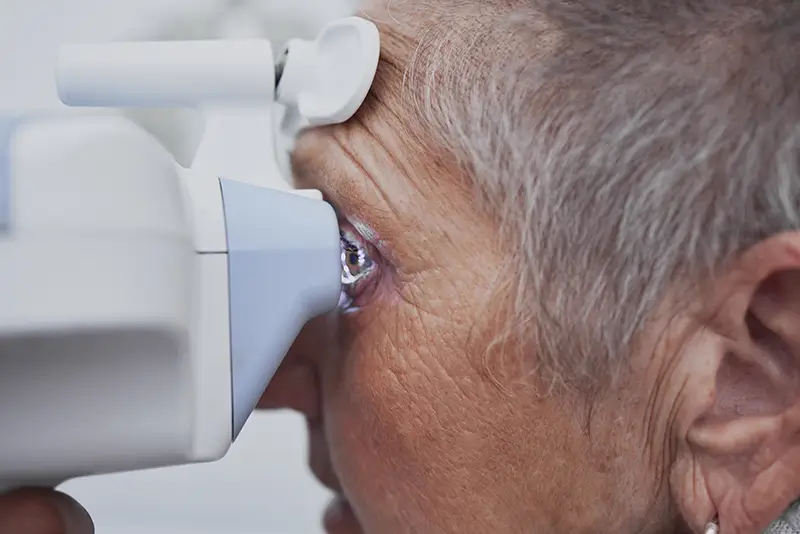Glaucoma is a group of eye conditions that damage the optic nerve. This optic nerve damage is often the result of abnormally high pressure in the eye. According to the Centers for Disease Control and Prevention (CDC), over 3 million Americans currently have glaucoma, and this number is projected to increase to 6.3 million by 2050 as the U.S. population ages. The CDC reports that glaucoma results in an annual economic burden of $2.86 billion, including direct costs and productivity losses.
Glaucoma does not usually have any symptoms and can only be detected through an eye exam. Glaucoma can lead to peripheral vision loss, which often progresses to tunnel vision and eventually blindness if untreated. Early diagnosis and treatment can help prevent the condition from getting worse.
There are different types of glaucoma and assigning the correct ICD-10 codes for glaucoma from the code range of H40-range is crucial for accurate billing. A company that provides medical billing for ophthalmologists can ensure proper code assignment, streamlining the billing process and reducing the risk of claim denials.
Need expert help with your medical billing and coding?
Types of Glaucoma
Glaucoma is classified as primary and secondary. Primary glaucoma indicates no identifiable cause while secondary glaucoma arises from other medical conditions.
Primary glaucoma types include Open-angle glaucoma, Normal-tension glaucoma, Angle-closure glaucoma, and congenital glaucoma. Secondary glaucoma includes Neovascular glaucoma, Pigmentary glaucoma, Exfoliation glaucoma and Uveitic glaucoma.
Glaucoma can affect one eye or both eyes, and it’s possible for each eye to have different types of glaucoma at the same time. According to ICD-10 coding for glaucoma guidelines, multiple codes from category H40. – (glaucoma) should be assigned as needed to specify the type of glaucoma, the affected eye, and the stage of the condition.
Coding for Glaucoma
For codes that identify types of glaucoma, a seventh character is used to indicate the stage:
- 0, stage unspecified
- 1, mild stage
- 2, moderate stage
- 3, severe stage
- 4, indeterminate stage
The seventh character indicating the stage is only applicable in certain cases and not all codes require this.
Glaucoma ICD-10 coding involves using the following codes:
H40.1110 Primary open-angle glaucoma in the right eye, stage unspecified
H40.1130 Primary open-angle glaucoma in both eyes, stage unspecified
H40.1131 Primary open-angle glaucoma in both eyes, mild stage
H40.2290 Chronic angle-closure glaucoma, unspecified eye, stage unspecified
H40.11X2 Primary open-angle glaucoma, right eye, moderate stage
H40.1113 Primary open-angle glaucoma in the right eye, severe stage
Other codes:
H40.0 Glaucoma suspect or ocular hypertension
H40.1 Open-angle glaucoma
H40.2 Primary angle-closure glaucoma
H40.3 Glaucoma secondary to eye trauma
H40.4 Glaucoma secondary to eye inflammation
H40.5 Glaucoma secondary to other eye disorders
H40.6 Glaucoma secondary to drugs
H40.8 Other glaucoma
H40.9 Unspecified glaucoma
Precise clinical documentation is essential to avoid glaucoma billing codes. The documentation for glaucoma should identify the type of glaucoma or related condition: open angle (H40.1-), closed angle (H40.22), glaucoma suspect (H40.0-), or ocular hypertension (H40.05-).
How to Code for Glaucoma in ICD-10
Medical coding for glaucoma requires careful consideration of the laterality and staging of glaucoma in each eye.
-
- When a patient has bilateral glaucoma and each eye is documented as having a different type or stage, and the classification distinguishes laterality, assign the correct code for each eye individually rather than using the bilateral glaucoma code.
- When a patient has bilateral glaucoma and both eyes are documented as having the same type and stage, only report the specific bilateral glaucoma code and indicate the stage as the 7th character.
- For ICD-10, not all glaucoma diagnoses require the use of Staging at the 7th digit. These are the codes in ICD-10 that do not have a laterality digit:
- H40.10- Unspecified open-angle glaucoma (Requires Stage digit for most severely affected eye)
- H40.20- Unspecified primary angle-closure glaucoma (Requires Stage digit for most severely affected eye)
- H40.89 Other specified glaucoma (Stage is not used)
- H40.89 Unspecified glaucoma H40.9 (Stage is not used)
For subcategories that do not have laterality options, assign separate codes for each type and/or stage of glaucoma, including the appropriate seventh character to indicate the stage. If no eye indicator, code for the Stage of the most severely affected eye.
- If a patient is admitted with glaucoma and the stage progresses during the admission, the code for the highest stage documented should be assigned. Coding the highest stage during an admission is crucial for accurate medical records and billing.
Understanding glaucoma, its types, and the intricacies of ICD-10 coding is essential for effective medical coding and billing. By staying informed about the latest coding guidelines and maintaining precise documentation, healthcare providers can optimize their billing processes.
If you’re unsure how to code for glaucoma in ICD-10 or need help with billing guidelines for glaucoma with diabetes, our team is here to help. Being a full-service medical billing company, we recognize the importance of accurate code assignment in ensuring proper reimbursement and minimizing claim denials.
Maximize your reimbursement and improve practice efficiency with our medical billing and coding services!




